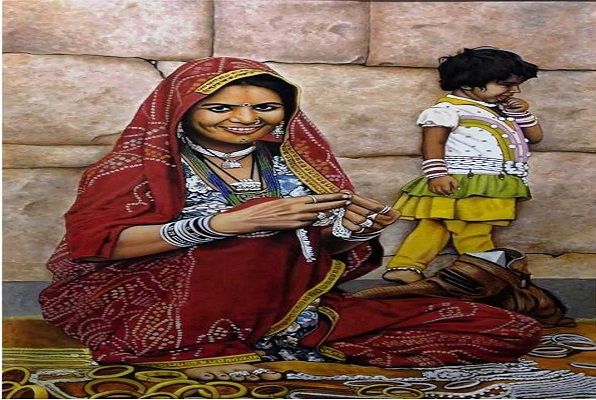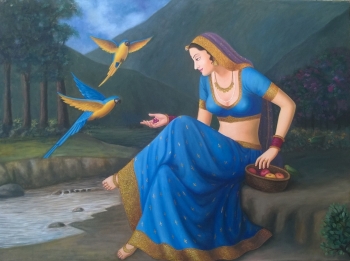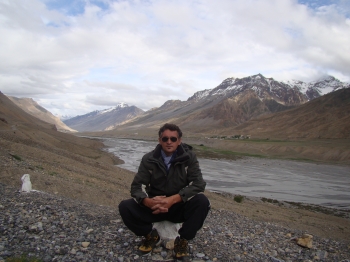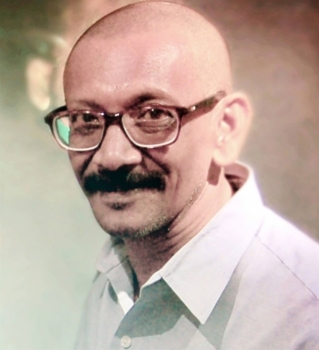
“They can put me in a jungle. Still, I can create.”
M.F.Husain
Recognition is an impressive rooter for any type of artist. When an artist does pick a brush to throw his/her imagination embedded by thoughts in the form of aesthetic designs and enchanting color combinations, the thought of someone applauding the artwork certainly doesn’t cross the mind.
In fact, most of the artists do not care for the attention or the fame they are going to get. This is so because, for an artist, the materialistic and the worldly materials don’t matter at all. It is the creative flair and the never-ending fiction in their head these artists always crave for.
Also Read: Why are Indian Paintings no more ignored at the global level
The western world has a rich art history for several centuries. From the work of greats like Pablo Picasso, Monet, Leonardo Da Vinci, Jackson Pollack, Rafael, etc. the western art world is filled with a variety of art styles, works, and forms. Some of these art forms were able to cross the test of time, others didn’t.
What fascinates me is that nowhere in western art history I can find an instance where Indian paintings or artworks are mentioned, not before then the 20th century. What’s the reason?
Why were Indian Paintings not Mentioned in Western Art History?
Indian style of art is not new. In fact, if we look at the estimated dates of ancient Indian artworks, it takes us as back as to 5000 years.
Indian paintings are rich in textures, subject matters, and hold quite exclusive content, still failed to make an impression in the western art world.
One of the major reasons for this is that India has been under foreign invasion for a couple of centuries before winning its independence in the year 1947.
The 15th to the 17th century saw the rise of the Mughal Empire in India. Mughal kings were fond of art and paintings. They brought along some impeccable Persian artists to work in collaboration with the Indian painters.
The hint of Mughal art can be seen in the ancient miniatures, Rajput paintings, and other artworks.
Remember, this was the time when oil paintings and landscape artworks started spreading in Europe.
When the industrial revolution came into European and American nations, India saw the rise of British rule in its territory. This again sustained for a period of 200 years.
Also Read: Bring Home Colorful Paintings for Inspiring Young Minds
Still, during the British Empire, a lot of artists rose from the ashes. Painters such as Raja Ravi Varma, Rabindranath Tagore, Abindranath Tagore, Amrita Shergil, etc have successfully been able to win a notable stature for themselves.
Rabindranath Tagore also founded Santiniketan that specifically focused on the art of modern times.
In a nutshell, it would be correct to say that the ancient and the alluring Indian art waited under the rule of imperialists to flourish and win accolades in the western community.
The Modern Art Era of India
This was the time when India got independence and six illustrious artists formed the Bombay Progressive Artists Group in the year 1948 that laid the foundation of modern paintings in India.
The group was formed by prestigious artists such as F. N. Souza, S. H. Raza, M. F. Husain, K. H. Ara, H. A. Gade, and S. K. Bakre. All these eminent artists were in their 20s or 30s at that time.
This was the time when modernism was encapsulating the western society quite strongly, and India was too touched by it. The founders of Bombay Progressive Artist Group strongly kept the concept of thinking freely and breaking the conventional shackles of old traditions in the art world.
Few other recognizable names that joined the group in the later stage were Vasudeo S. Gaitonde, Krishen Khanna and Mohan Samant.
Recognition of Indian Paintings in the Western Market
You will be surprised by knowing that the very first accolade that an Indian painter gained in the western market was as early as the 1800s.
It was Raja Ravi Varma in the year 1873 who won the award for his work at an art exhibition in Vienna. Along with this, his artworks were also displayed at World’s Columbian Exposition held in Chicago in 1893, where his paintings won him 3 gold medals.
Also Read: How to Utilise Social Media to Market Your Artwork?
After this, Indian art and artists had to wait a long time for global fame.
Some of the prominent names that have jittered the foreign art conventions and exhibitions are V.S. Gaitonde, M.F.Husain, Tyeb Mehta, and S.H. Raza.
Gaitonde, who passed away in 2001, could never imagine that after 14 years of his death, his painting would be sold at a staggering price of $4.4 million (29.3 crore INR) at Christie’s.
In addition to this, in the year 2002, Tyeb Mehta’s ‘Celebration’ was sold at 1.5 crore INR ($3,00,000). Indian modern art paintings, in the last few decades, are able to draw many art collectors and experts from the west.
For instance, in the 1990s, Gaitonde’s canvas was sold for a rocketing $9,65,000. Along with this, in the same exhibition, F.N. Souza’s painting named ‘The Butcher’ was sold for a record $1.65 million.





















